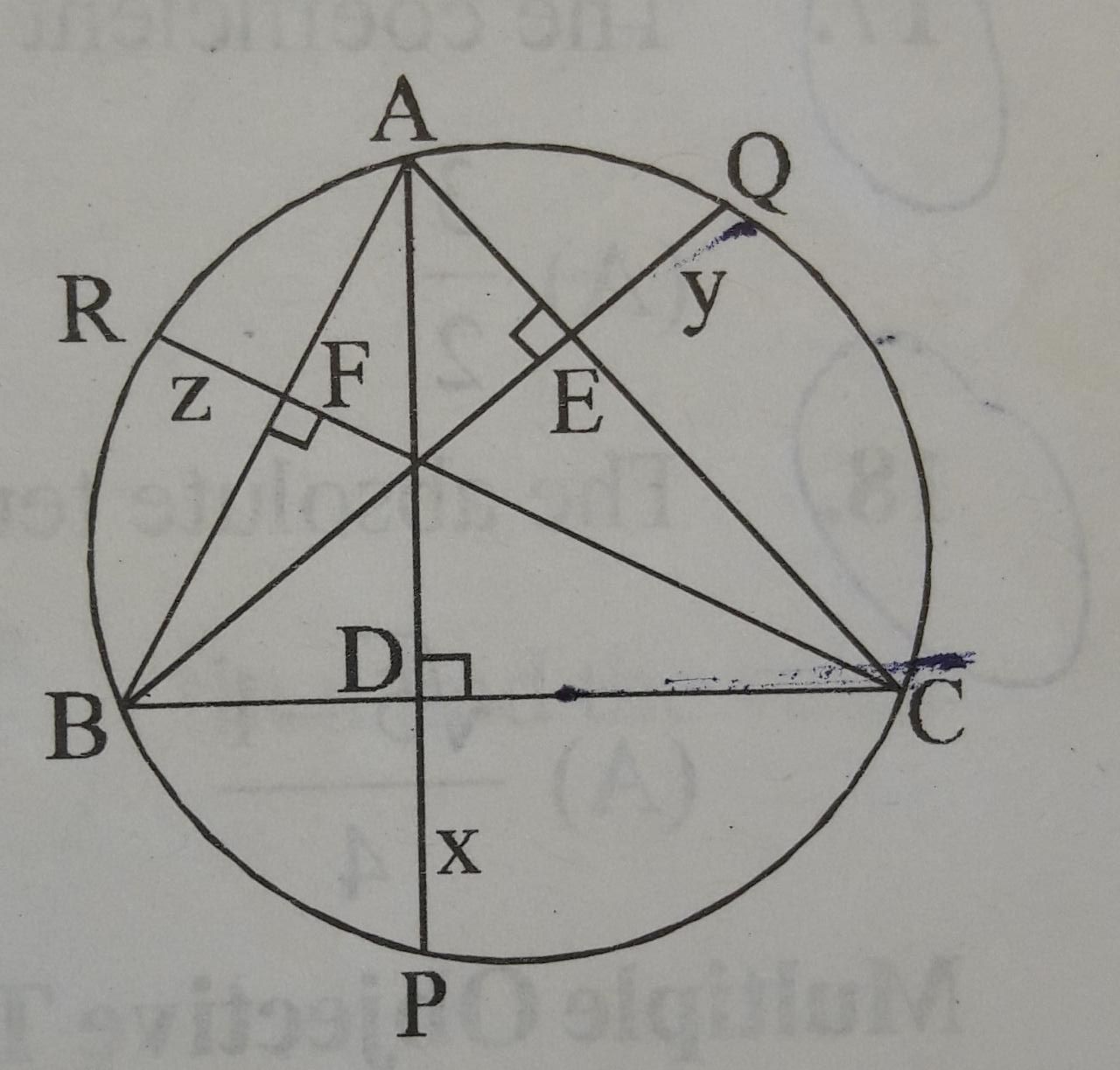as shown in the figure AD is the altitude on BC and AD produced meets the circumcircle of traingle ABC at P where DP =x . similarly EQ=y and FR = z . if a, b ,c respectively denotes the sides BC, CA, and AB , then a/2x+b/2y+c/2z has the value equal to
as shown in the figure AD is the altitude on BC and AD produced meets the circumcircle of traingle ABC at P where DP =x . similarly EQ=y and FR = z . if a, b ,c respectively denotes the sides BC, CA, and AB , then a/2x+b/2y+c/2z has the value equal to











